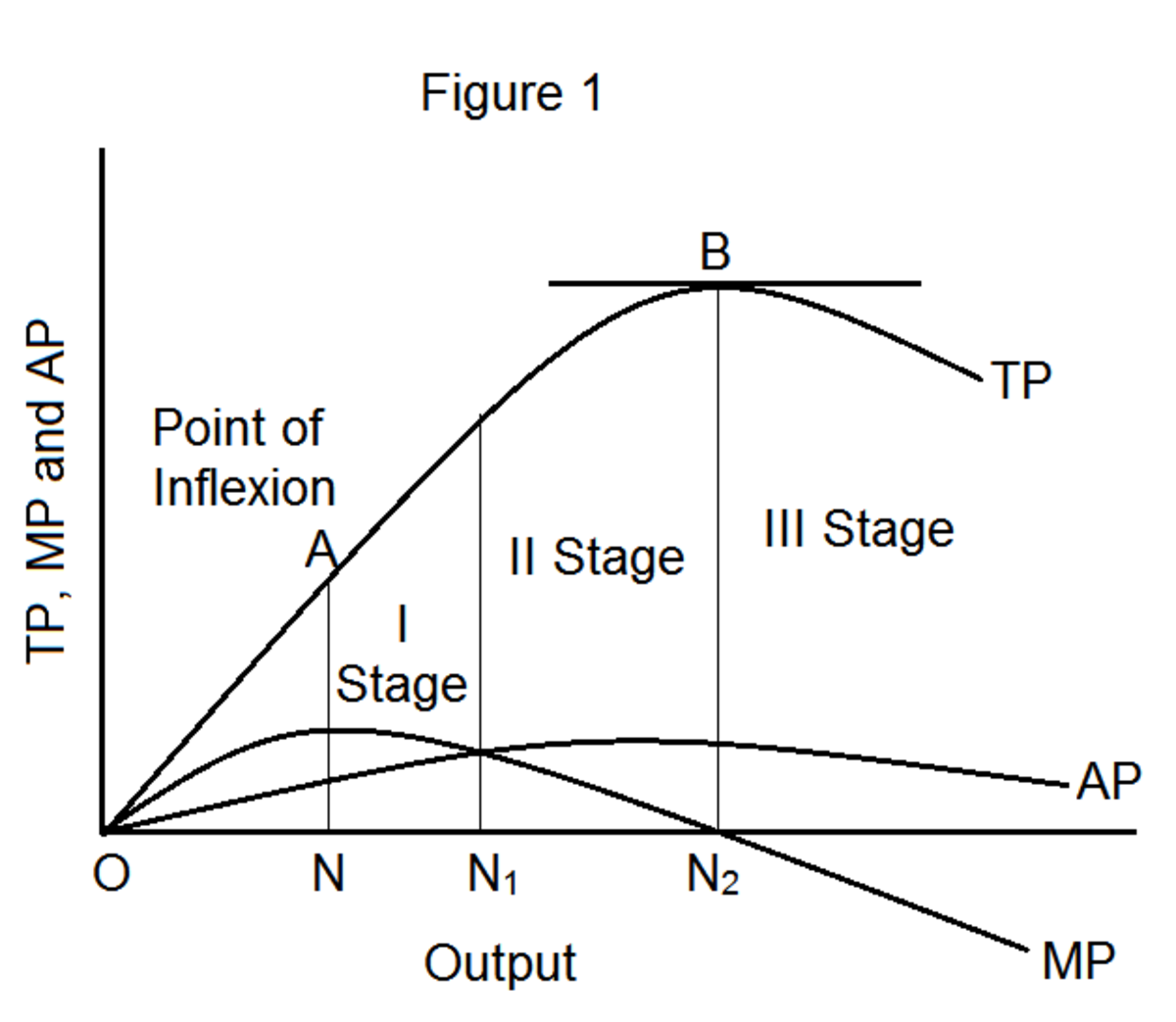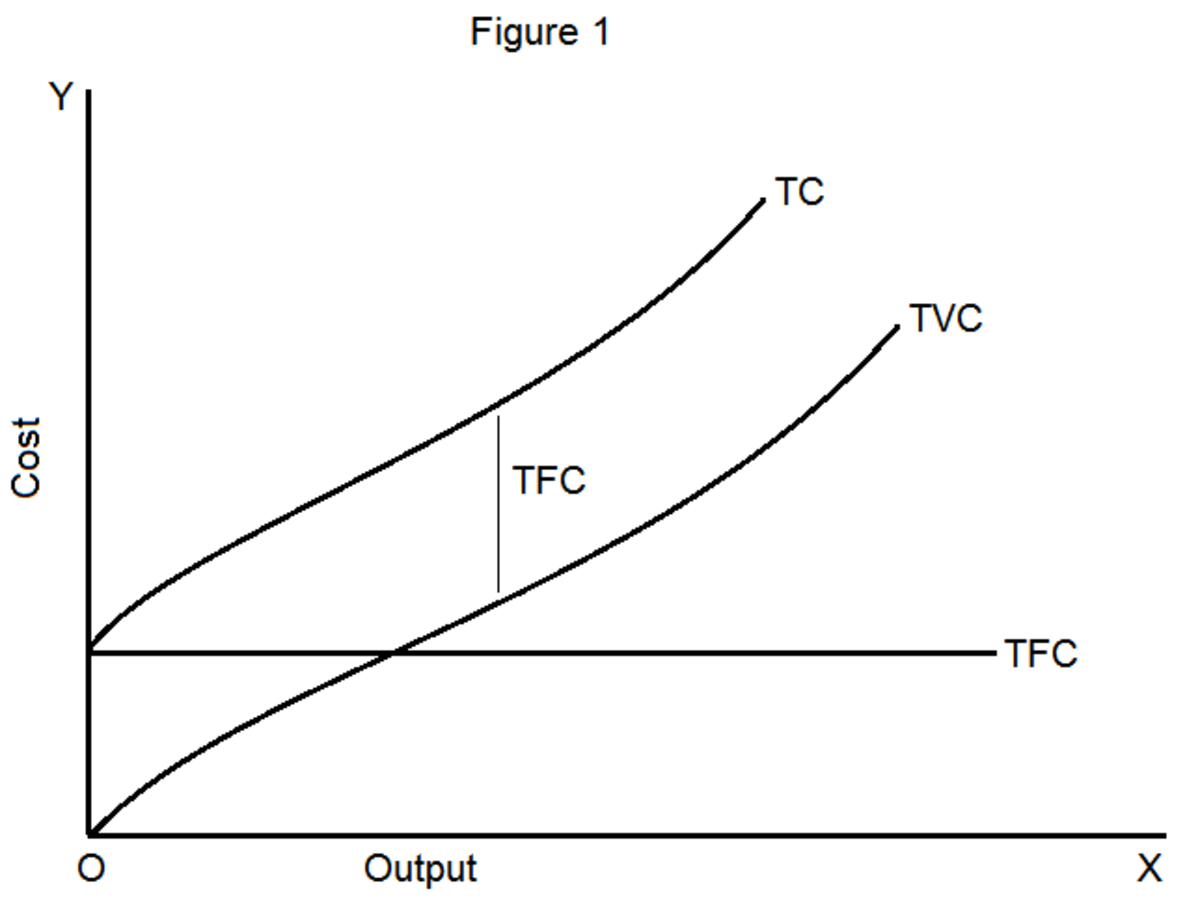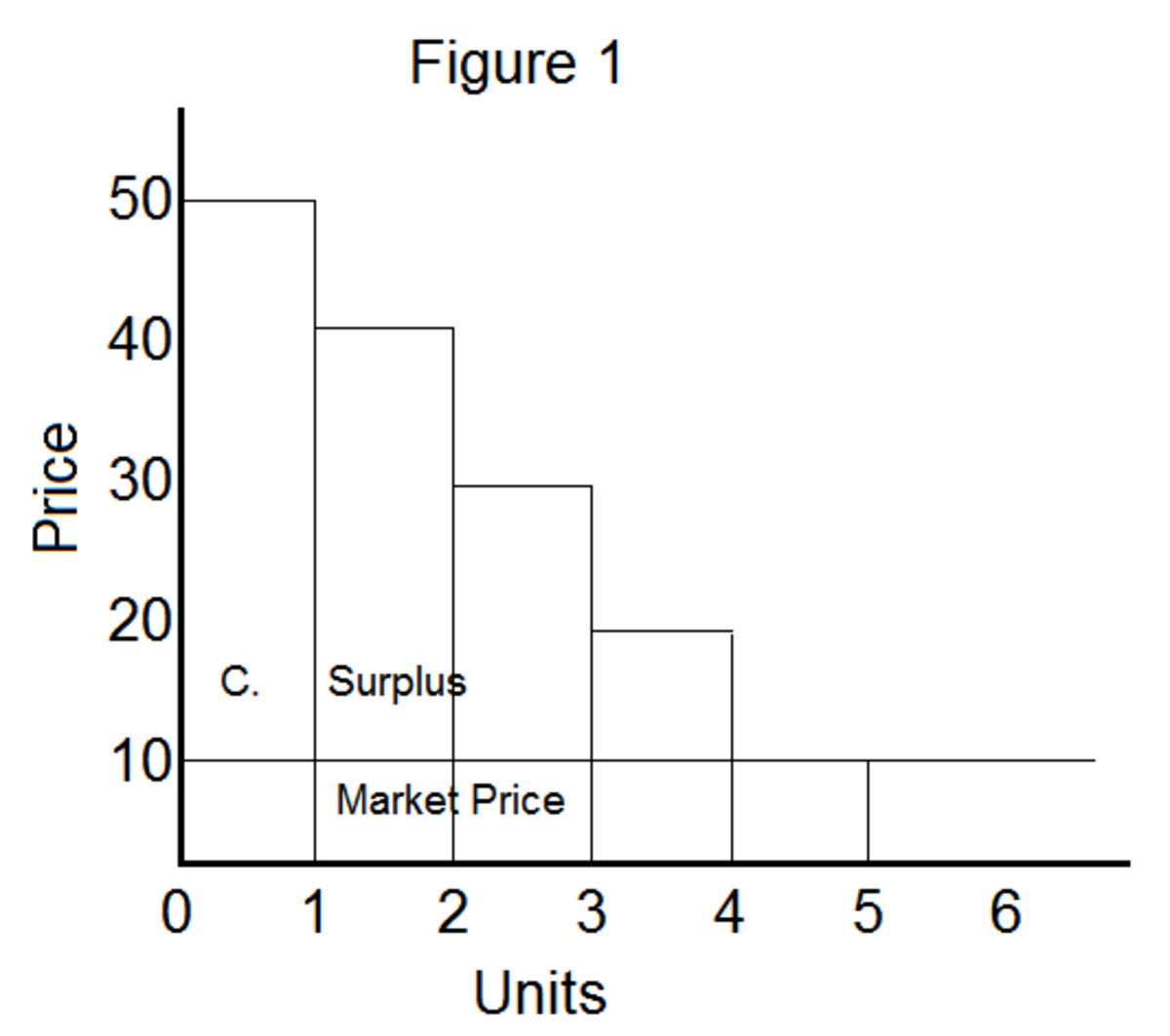PRODUCTION THEORY: PRODUCTION IN THE SHORT RUN AND THE LAW OF DIMINISHING RETURNS
In production, time is very important. Three main time periods are considered in production. The short- run, the long- run and the very long- run. In this hub however, the short run is what the focus will be on.
The short-run is defined as the period of time over which the inputs of some factor, called fixed factors cannot be varied. The factor that is fixed in the short run is usually an element of capital (such as plant and equipment). The fixed factor can also be land, management or even the supply of skilled salaried labor. In the short-run, production level can be changed by using more or less of those inputs that can be varied. These inputs are called variable inputs. In this explanation, labor services shall be used for variable input and land as the fixed input.
Since some inputs are fixed, adjustments in output are made by varying the variable inputs. The resultant returns to output are therefore attributed to the variable factor. For this reason returns as explained by the short-run laws are called returns to the factor (variable factor). These are increasing returns, constant returns and diminishing returns. As more variable inputs/factors are employed to the fixed factor, the law of diminishing returns operates. This law is also called the law of variable proportions.
The law of diminishing returns states that, if increasing quantities of a variable factor are applied to a given quantity of a fixed factor, the marginal product and average product, of the variable factor will eventually decrease. To explain the law, the following assumptions are important:
a. There are two types of input, the fixed input and the variable input or factor, say labour. The law would never be in operation if both inputs were variable
b. The efficiency of all the variable inputs employed is equal. If subsequent units of the variable inputs employed were less efficient, the fall in the marginal product would be attributed to the inefficiency of these variable factors.
c. Owing to the fact that any improvement in technology increases the productivity of the variable input, technology is assumed not to improve; we assume technology is constant.
Explanation of the law
To explain the law, we will assume that we have equal amount of the same fixed input, say ten pieces of land of 10 acres each and of the same fertility. We employ one person on the first piece of land, two on the second, and three on the third and so on up to the 10th piece of land. The table down the end of the text explains the law.
From the table, as more variable inputs are employed on the 10 acres of land (the fixed input) initially, the marginally product increases. Marginal product (MP) is the addition to the Total Product (TP) as a result of employing one more unit of the variable input. The rising portion of the Marginal product is referred to as increasing return. In the table above the rising portion of the MP is referred to as increasing returns. In the table above, as labour the variable factor is increased from one to four, the MP increase from 20 to 60.
Reason for the increase in the Marginal Product
The additions to the total product are attributable to the addition of one more unit of the variable input to the fixed input. The reason the MP rises is that, initially the fixed input or the 10 acres of land is in uneconomically large proportion to combine efficiently with labor. In other words, the variable inputs are too few on the fixed inputs. For this reason, as more variable inputs are employed, they are combined in their most economical proportion with the fixed input, hence the MP rises. At this stage, TP increases at an increasing rate.
The MP attains a maximum after increasing for some time, after which it diminishes.
When the MP is greatest, constant returns is experienced. In the table above, constant returns is reached with the employment of the fifth person. This is the stage where the ideal combination of the fixed and variable input is reached. Because constant returns has no serious economic implications, it is most often than not overlooked in economic analysis.
DIMINISHING RETURNS
The MP eventually diminishes, as more variable inputs are employed on the fixed input. In the table above, diminishing returns is shown by the falling MP values. Diminishing returns set in when the 6th person was employed. The MP falls from 60 to -9 accordingly to indicate diminishing returns.
Reasons for the fall in the Marginal Product
Beyond the level where the best combination of the fixed and variable input is reached, if more variable inputs should be employed, the fixed inputs will be combined in uneconomically small proportions with the variable inputs. The fixed input becomes congested or overused. The MP falls as a result. The falling of the MP still sees the total product rising. The rise is however, at a diminishing rate. When the TP is at a maximum, it is because the MP is zero. The AP also falls as the MP falls, but the MP still falls faster.
Explaining The Laws of Returns To The Factor
Land
| Quantity of Labour (L)
| Total Product (TP)
| Marginal Product (MP)
|
|---|---|---|---|
10 acres
| 1
| 20
| 20
|
10acres
| 2
| 50
| 30
|
10 acres
| 3
| 90
| 40
|
10 acres
| 4
| 150
| 60
|
10 acres
| 5
| 210
| 60
|
10acres
| 6
| 220
| 10
|
10 acres
| 7
| 225
| 5
|
10 acres
| 8
| 225
| 0
|
10 acres
| 9
| 218
| -7
|
10 acres
| 10
| 209
| -9
|









